YOU ARE LEARNING:
What Are Scalar and Vector Quantities?

What Are Scalar and Vector Quantities?
Vector quantities have both a magnitude and a direction, whereas scalar quantities have only a magnitude.
These are examples of different quantities
Mass, force, time, temperature and velocity.
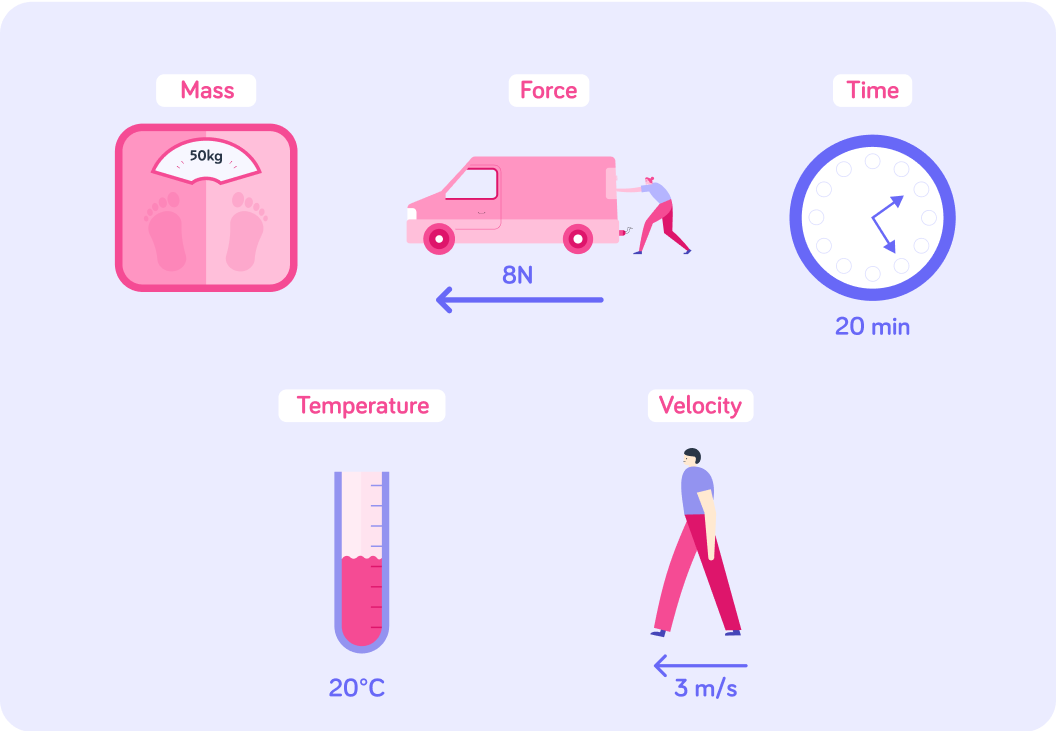
Some of these quantities have arrows. What do you think the arrows indicate?


All of these quantities have numbers. What do the numbers indicate?


So there are two types of quantities here
The ones that have only a size, like mass, time and temperature. The ones that have both a size and a direction, like force and velocity.

By the way!
You don't normally use the word "size" when it comes to quantities. You should use the word magnitude instead.

Which quantity is this?

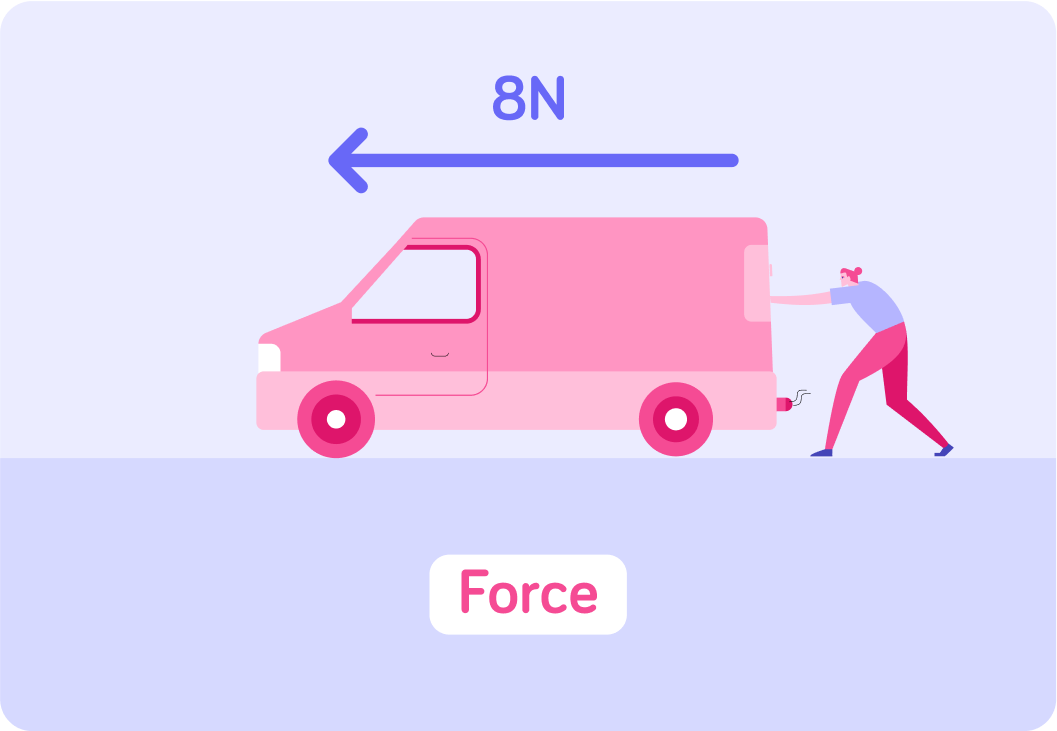
Force is a VECTOR quantity
Quantities that have both a magnitude and a direction are vectors.

Is temperature a VECTOR quantity? Answer yes or no.

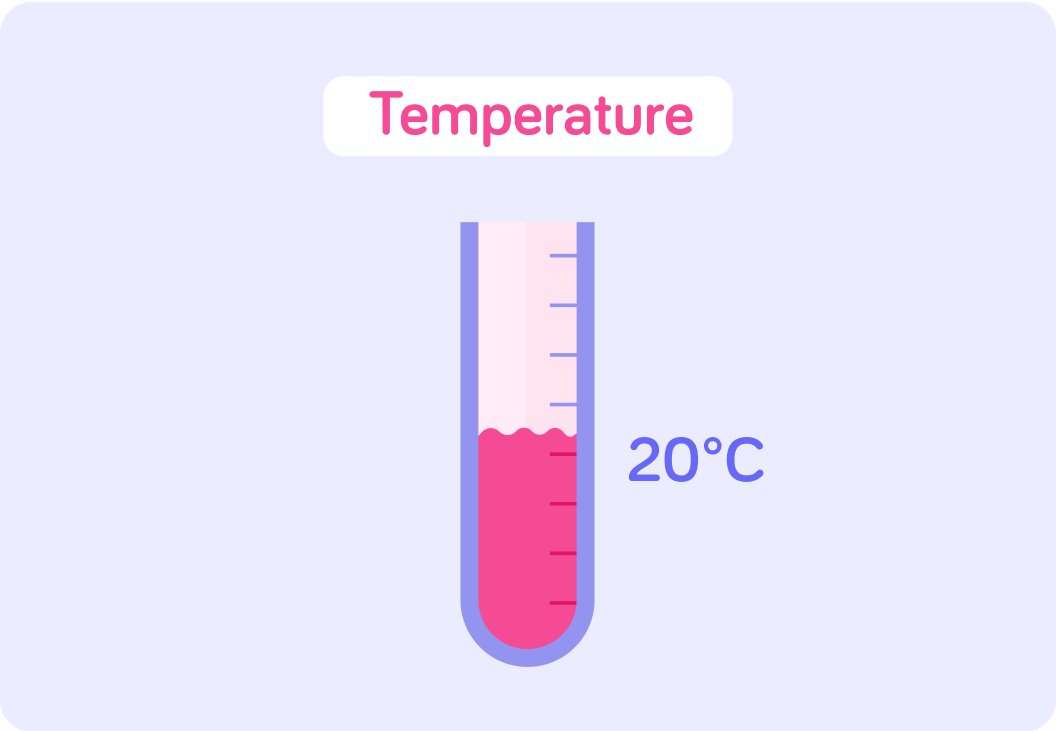
Temperature is a SCALAR quantity
It has only a magnitude. It doesn't have a direction.

Is distance a vector or a scalar quantity?

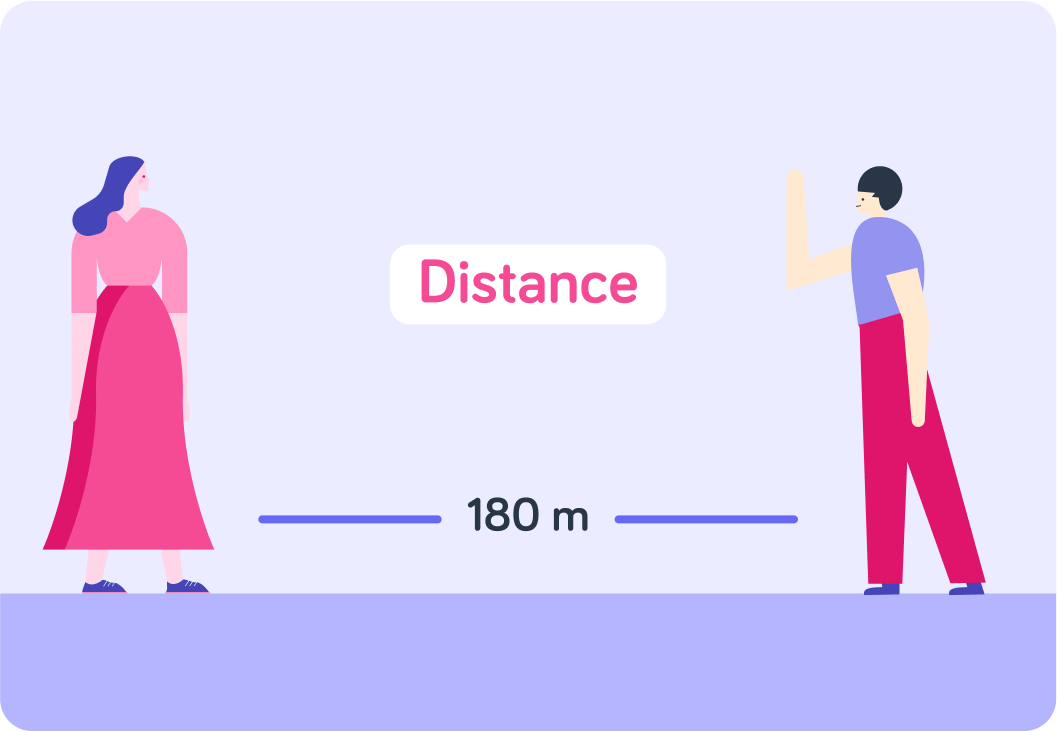
Is velocity a vector or a scalar quantity?

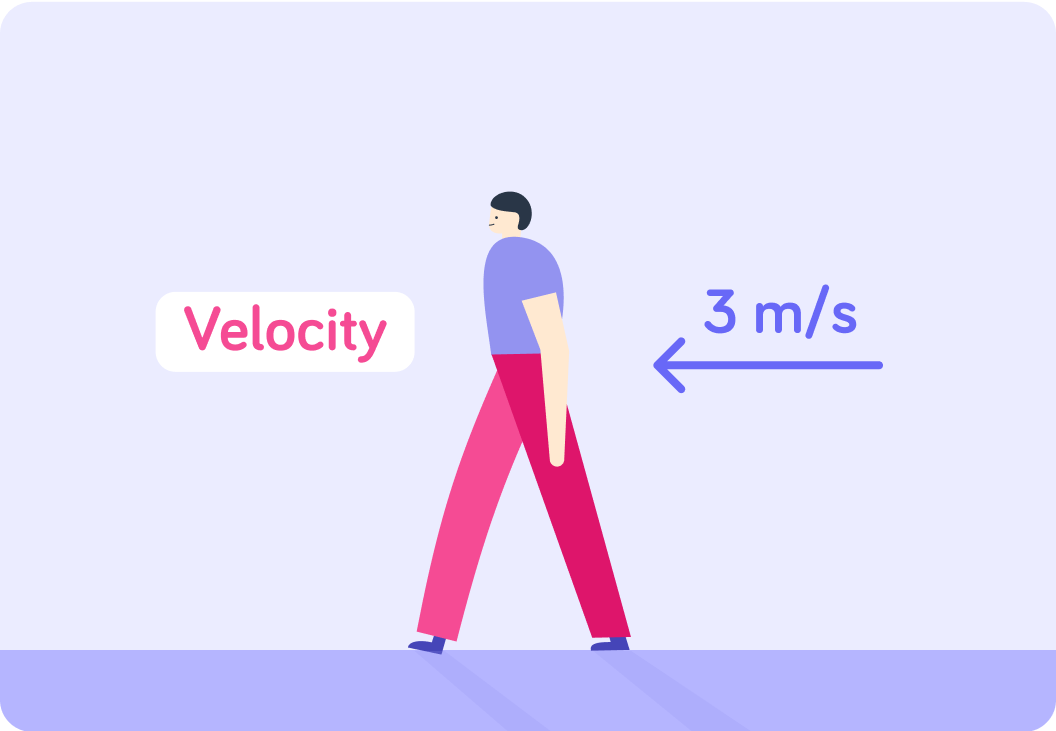
Is density a vector or a scalar quantity?

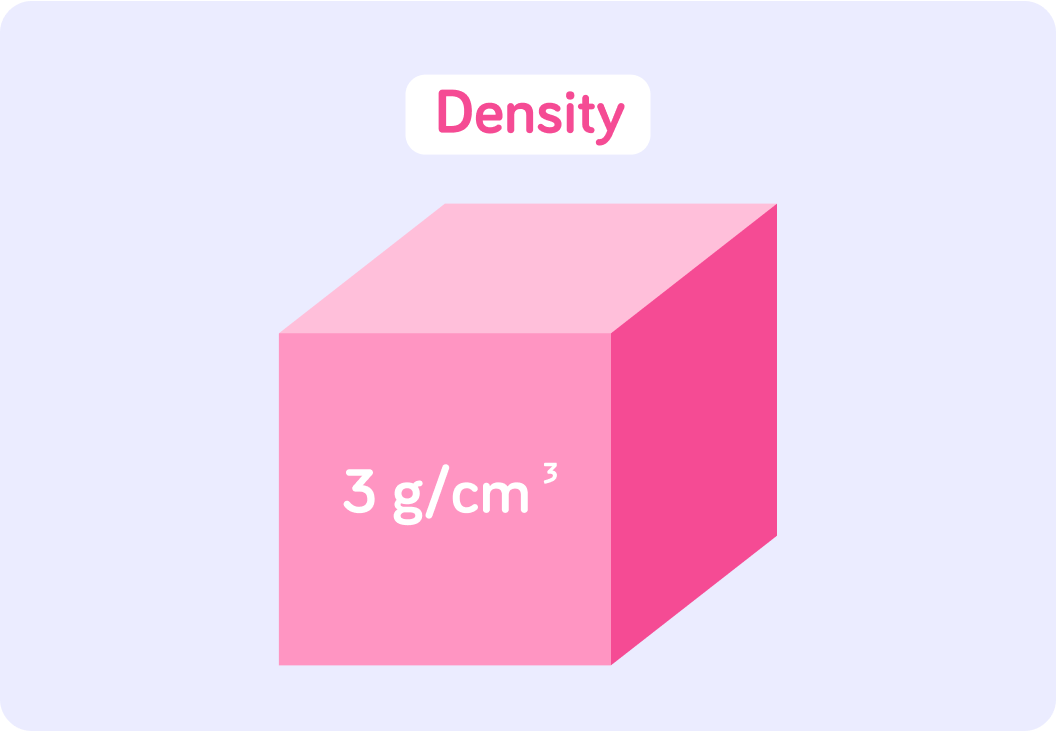
Is mass a vector or a scalar quantity?

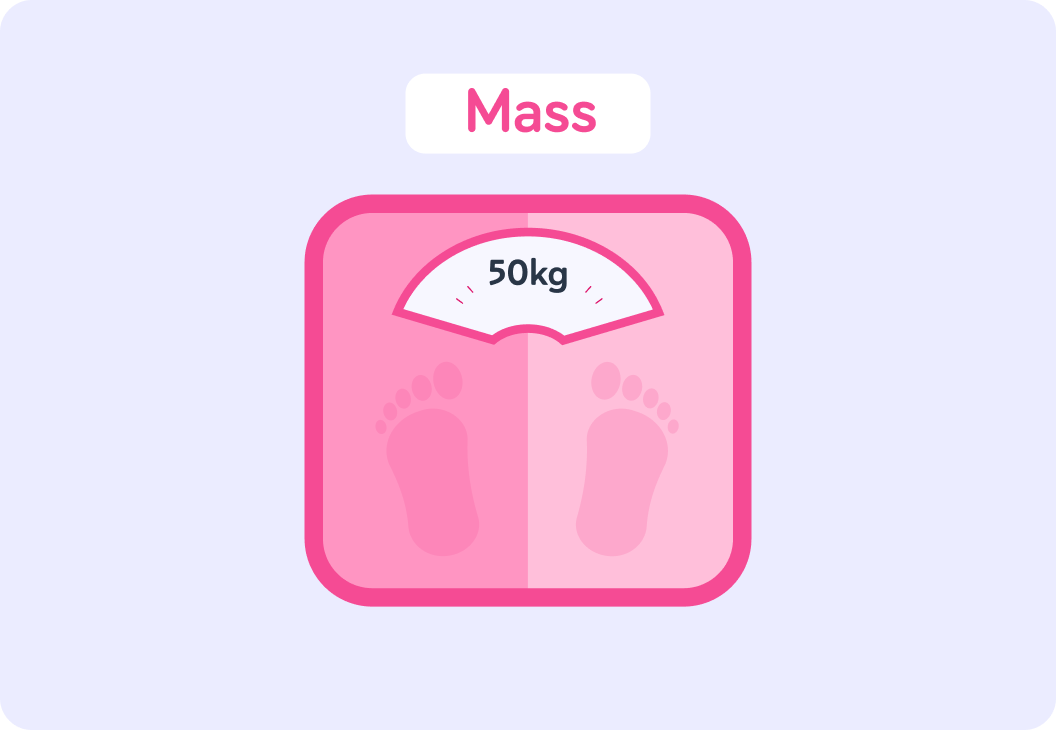
Is weight a vector or a scalar quantity?

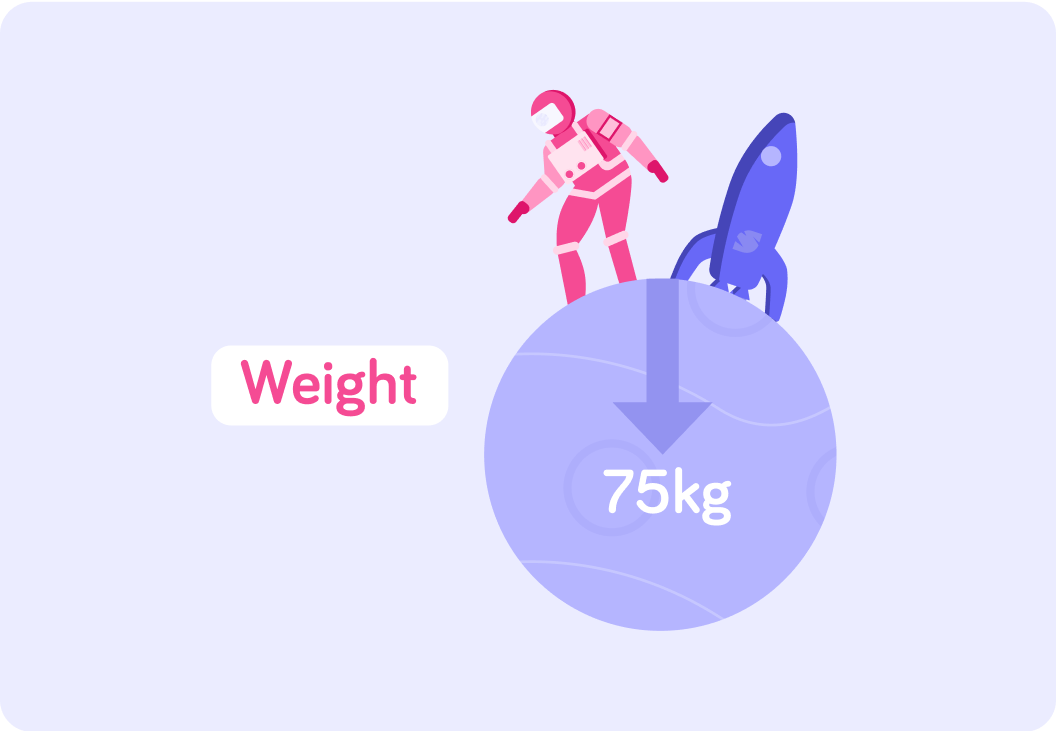
Is speed a vector or a scalar quantity?

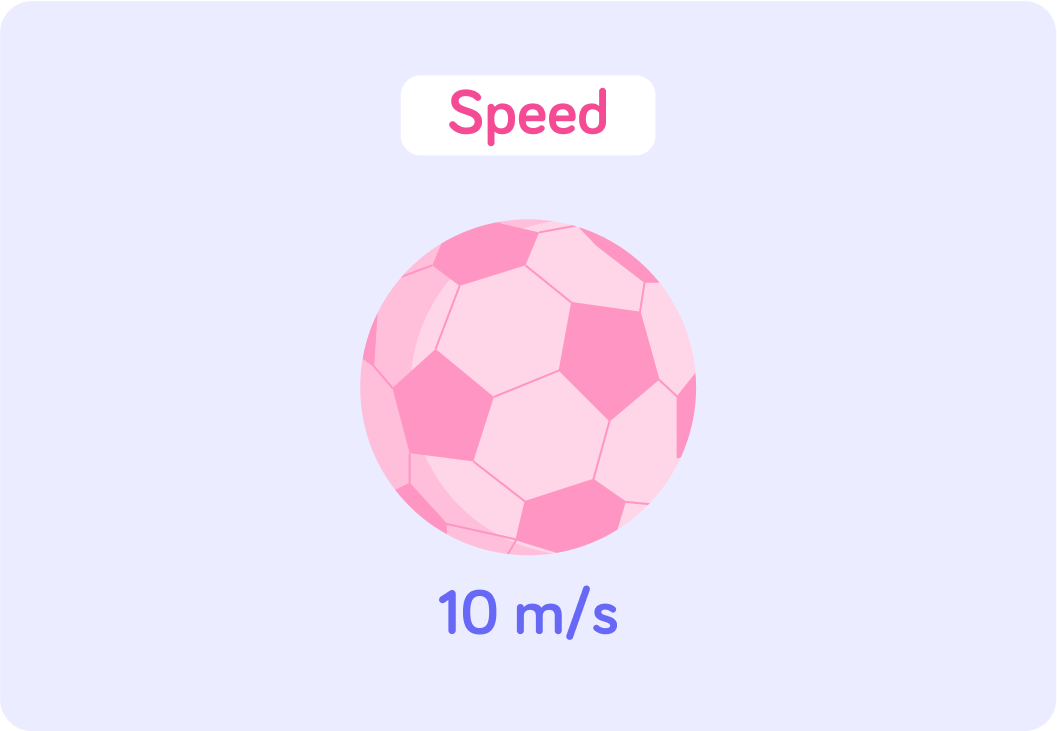
Is acceleration a vector or a scalar quantity?

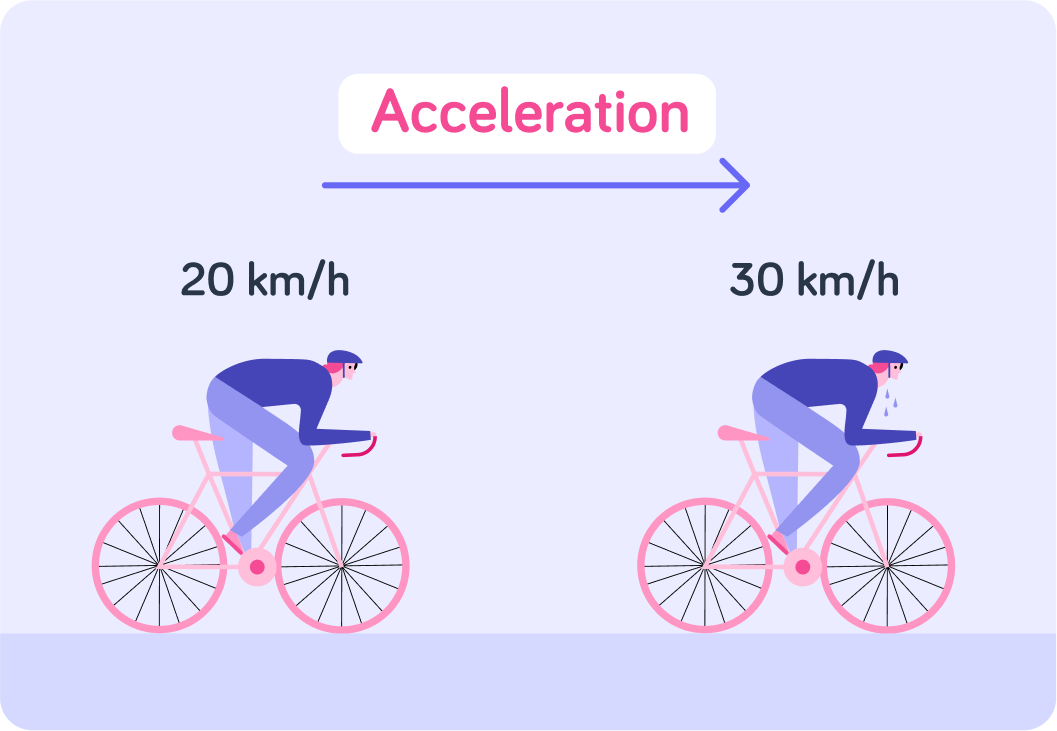
Is time a vector or a scalar quantity?

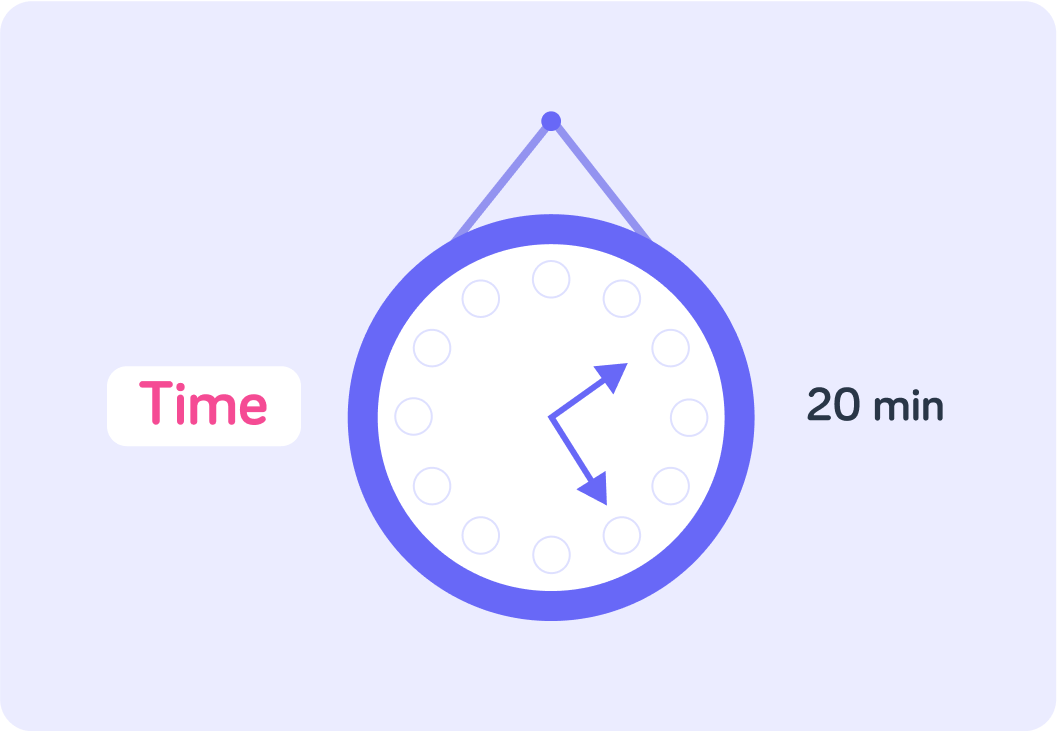
To recap! There are two types of quantities
Scalar and vector quantities
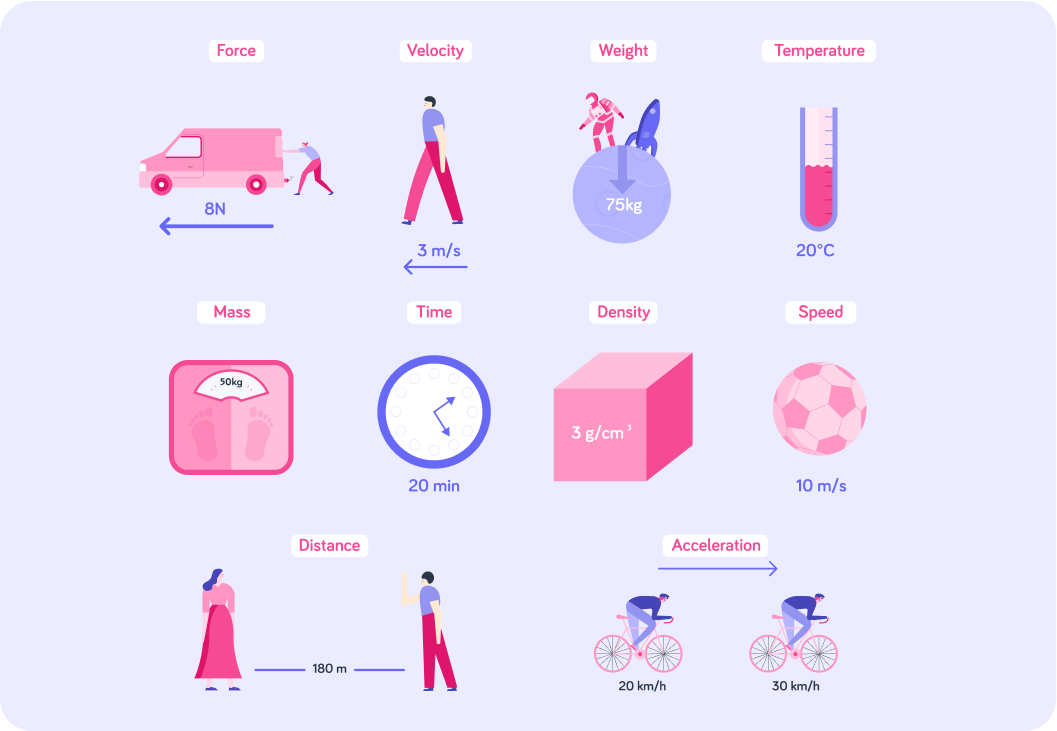
Vector quantities have both a magnitude and a direction
Like acceleration, force, velocity and weight.
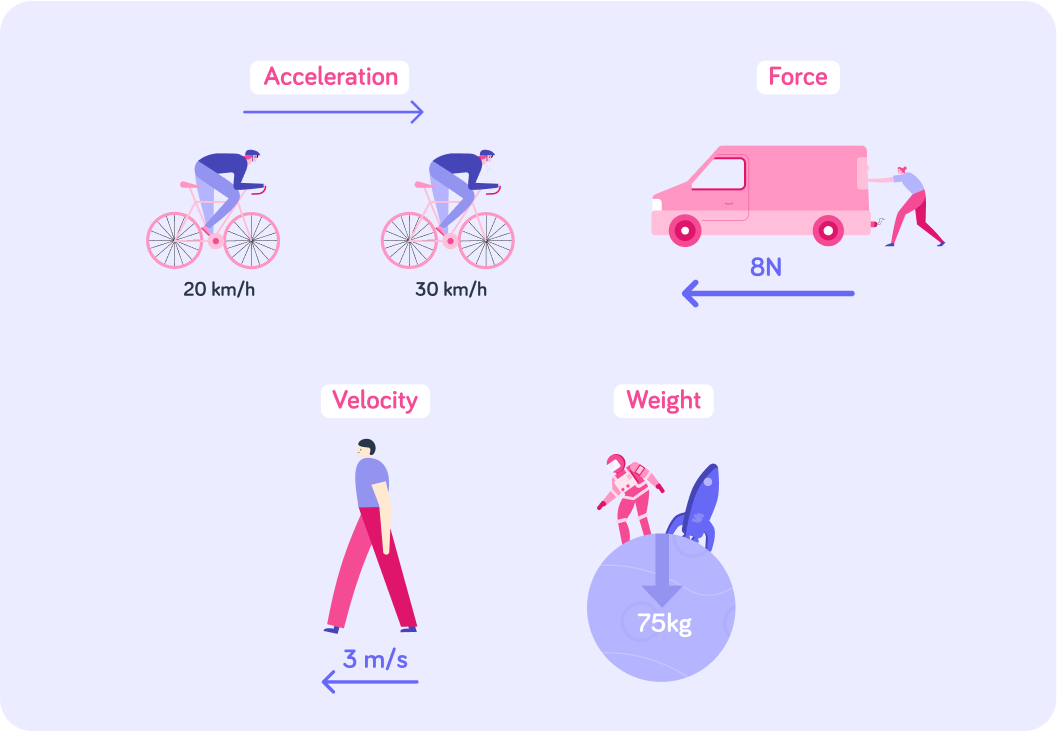
Scalar quantities have only a magnitude
Like mass, time, density, speed, distance and temperature.
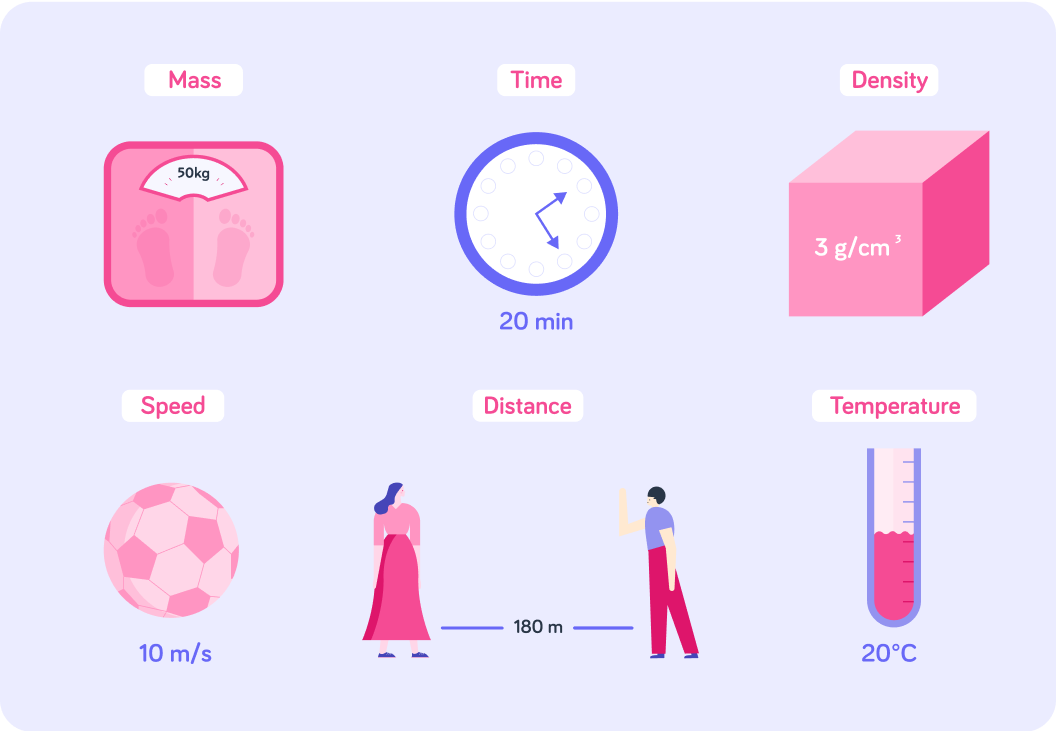
Pick all the options that are examples of scalar quantities.

You can select multiple answers
Pick all the options that are examples of vector quantities.

You can select multiple answers
Summary! Vector quantities have both a magnitude (size) and a direction
Examples include acceleration, force, velocity and weight.

Scalar quantities have only a magnitude (size)
Examples include mass, time, density, speed, distance and temperature.

More on this in later lessons
For example, later lessons look more closely at the difference between speed and velocity, the difference between mass and weight, and on what is meant by the "direction" of acceleration and weight.

